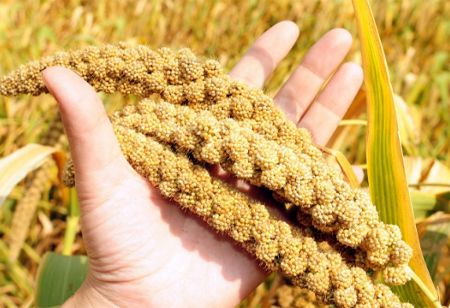
Declining Millet Production Grows in Concern Amidst Agricultural Shifts


Despite being hailed as “Shree Anna” or divine food in 2023, millets face a tough battle in India’s agricultural landscape.
The latest data from the Ministry of Statistics and Program Implementation (MOSPI) reveals stagnation in millet production over the last decade.
This trend is troubling, given the rising minimum support price (MSP), which is intended to incentivize farmers.
Analysts attribute this stagnation to a significant decline in the area under millet cultivation. Farmers are increasingly prioritizing crops like rice, wheat, and other cereals, which offer better profit margins.
This shift in focus is understandable, given the economic pressures and the demand for these staple grains. However, it poses a serious threat to the cultivation and availability of millets, which are known for their nutritional benefits and resilience in drought-prone areas.
The Gross Value of output (GVO) at current prices for millet crops has remained almost flat over the past 12 years, with a compound annual growth rate (CAGR) in the low single digits.
This stagnation highlights the challenges faced by millet farmers, who are struggling to keep up with the profitability and productivity of other crops.
The 2023-24 annual report from the Reserve Bank of India (RBI) sheds further light on this issue, pointing to a significant yield gap in millet production. While millets are considered drought-resistant, the report emphasizes that minimal but assured irrigation is crucial to bridging this gap. Additionally, the report identifies labor, fertilizer and machine usage as negatively and significantly related to the yield gap, suggesting that improvements in these areas could enhance millet yields.
Despite the promotion of millets as super food, the demand for niche value-added millet foodstuffs has not been sufficient to address supply-side challenges. This disconnects between demand and supply underscores the need for more comprehensive support for millet farmers.
The lack of mention of millets in this year's Budget is a concerning oversight, especially given the previous year’s recognition of millets as divine food. Policymakers need to revisit their strategies and provide more robust support to millet farmers, ensuring that this resilient and nutritious crop does not fall by the wayside.
In conclusion, the stagnation in millet production is a multifaceted issue that requires a concerted effort from all stakeholders. By addressing those economic, agronomic, and policy-related challenges, India can revitalize millet cultivation and secure a brighter future for this ancient grain.